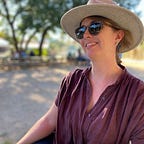Plan Canada Social & Racial Equity Issue
After more than a year of work, it is so exciting to see the Plan Canada Social and Racial Equity issue live and published.
The issue opens with Kamala Todd’s “City of Land Remembering”, which situates readers and the planning profession in context of the land and long history of where we work. Jonathan Boron, Katherine Levett, and Myfannwy Pope’s “Racial Inequities in Rural, Remote, and Northern Canadian Planning” then sets historical context of slavery and colonialism in Canada in a planning setting, demonstrating how environmental impact assessment processes continue displacement and domination today. We’ve provided some articles and books in the Planning Research Digest and Planner’s Bookshelf to expand on these themes across the North American continent.
The next few articles touch planning education, how planning is historically defined, and what is missed by framing the planning practice in that way. Francis Kodjo Kwashie writes in “The absence of African Planning & Architectural Excellence in Canadian Planning Discourse: the case of Nigeria’s Sungbo Eredo” about the absence of Indigenous-Black African planning excellence in planning education. Cecille de Laurentis discusses the opportunity for grassroots popular education in the Black tradition so that planning students graduate with solid skills in community-based planning in “Urban Planning Education After Black Lives Matter”. Both authors remind the readers of planning practices invented by Black-African communities that form intrinsic parts of current practice, and how radical Black self-determination in planning practice and theory is important and beneficial for all planners to understand.
Rahma Siad-Togane’s “Spatial Marginality and Toronto’s Priority Neighborhoods” and Sinovuyo Lehlohonolo Mnyanda’s “Spatial inequalities and informal settlements in apartheid and post-apartheid South Africa” both tackle the history of planning harms and apartheid. Siad-Togane shows how stigmatizing neighbourhoods and public housing through the priority neighbourhood practice results in increased surveillance, policing, and social controls, creating a self-fulfilling prophecy of “social disorder”. Mnyanda show how informal settlements in post-Apartheid South Africa, despite constitutional and other national-level guarantees to housing, are continuing long-standing segregation introduced by white supremacy and colonization. These are lessons applicable to Canada, considering Canada’s new National Housing Act also guarantees a right to housing and because Canada’s Indian Act was the direct precursor to South Africa’s Bantustan Acts. Shannon Holness’ “Appreciating the Natural Heritage Landscapes in Low Income ‘Hoods” foregrounds the need to recognize the assets of marginalized neighbourhoods and the dangers of planning practices that swoop in with assumptions of deficits.
We then move to promising planning practices and futures. Livia Balone, Felipe Canavera, and Jason Syvixay’s “Edmonton’s zoning makeover is an opportunity for equity” documents how the City of Edmonton is stripping away harmful concepts and practices embedded in a zoning bylaw. Considering that zoning bylaws emerged at around the same time in North America and the Commonwealth and were developed by the same milieu of people with explicit and implicit goals of racial and economic segregation, Edmonton is embarking on a project of unraveling that many local governments can learn from. Darrien Morton, Zoë Mager, Michael Redhead Champagne, and Nigaanii Wabiski Mikanak Ogichidaa’s “In honour of the village we have today: Co-creating a Housing Solutions Lab for Indigenous youth aging out of care in Winnipeg’’ describes the successes of a community-led social innovation lab to address the housing challenges of Indigenous youth ageing out of the foster care system. This article harkens back to the recommendations made by de Laurentis earlier in this issue.
After covering the scope of planning work and positive and negative planning impacts, we dive into ideas of assets and institutionalized neglect, and how the positionality and lived experiences of planners can bring both to the foreground. Brytanne Brown, Nicole Payne, Ariel Ward, and Margo Dawes in “Freedom of Movement: A conversation on the mobility industry’s role in normalizing self-righteousness with At the Intersections’’ describe how their work in transportation and mobility is focused on ensuring unrestricted movement for Black and brown people. Like Holness, they describe how places cultivated by racialized communities thrive in spite of the lack of privilege and resources, and how planners who come in with goals of revitalization and without local context can risk erasure of those community-developed places. Leslie Kern in “Care-full Cities’’ discusses the spatial dimensions of care labour in mobility, accessibility, and multi-function spaces, pointing out the hidden nature of care work and how it is left out of planning discourse. Thea Kurdi and Anika Abdullah point out in “Disability Justice in the City,” ways that human rights and accessibility legislation needs to be incorporated into planning practice, particularly in the context of walkable cities and sustainable design. Tiffany Miller-Myrdahl concludes this section with “We’ve painted a rainbow crosswalk. Now what?” to discuss systemic change versus performative change in the context of placemaking for queer spaces. This piece harkens back to issues raised by Siad-Togane, Holness, and Mnyanda on the potential for harm when performative policy is not followed-up with systemic change.
Jason Syvixay and Lyla Peter call in our profession in “To bring equity forward, we must challenge our profession from within” to look at how and why certain planning jobs are more prestigious than others and some ways that employers and the Institute could unwind these disparities. Finally, Kamala Todd’s poem “We are carrying our bundles forward” brings us full circle to reflect on where we go from here.
You can download a copy of the issue here.
